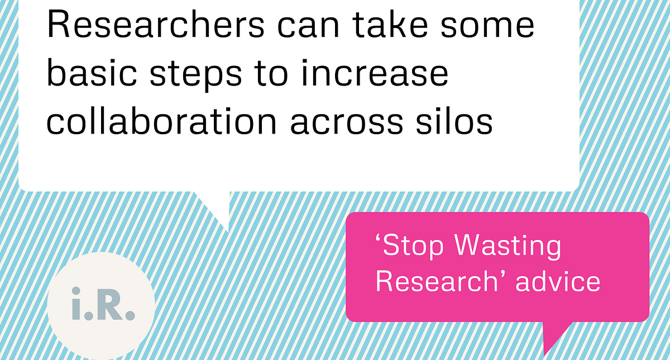Data Science News
Medium
136
Image Credit: Medium
Code Like a Poet, Think Like a Politician
- The connection between coding and creativity and how programmers can be poets and politicians.
- The use of rhythm, structure, and emotion in coding to bring meaning, similar to how a poet uses these elements in their work.
Read Full Article
8 Likes
Nycdatascience
141

Image Credit: Nycdatascience
Predicting the Unpredictable: Revolutionizing E-commerce Delivery with Machine Learning
- Accurately predicting delivery timelines in the e-commerce industry is a complex challenge due to various factors.
- A machine learning system utilizing the Olist e-commerce dataset was developed to forecast delivery times with high accuracy.
- Challenges include extreme variability, geographic complexity in Brazil, and non-linear relationships affecting delivery predictions.
- A multi-layered approach involving meticulous data preparation, feature engineering, and advanced modeling strategies was implemented.
- A region-specific clustering model identified three distinct delivery regions: Business Centers, Mid-Tier Regions, and Remote Areas.
- Specialized XGBoost models tailored to each cluster improved prediction accuracy significantly.
- The system also quantified prediction uncertainty, transforming point estimates into probability distributions.
- Results showed dramatic improvement in prediction accuracy, particularly in Business Centers compared to Remote Areas.
- An interactive chatbot interface was developed to make complex predictions accessible to business users.
- The system offers benefits like smarter promise dates, region-specific strategies, and operational optimization for businesses.
- Future research directions include temporal modeling, external data integration, online learning, and causal modeling.
Read Full Article
8 Likes
Medium
296

Image Credit: Medium
Bonus Round! Spark: The Silent Engine That Powers Your Day (and the Future of Technology)
- Spark is the invisible glue that powers the information age by enabling personalized experiences and fast data processing.
- Apache Spark was born at the University of Berkeley in 2014 as a project to process data faster than Hadoop.
- Spark operates in memory, avoiding the need for constant reading and writing to storage, resulting in efficient performance.
- Spark quickly gained popularity in the tech industry due to its revolutionary approach to data processing.
Read Full Article
17 Likes
Towards Data Science
332

Image Credit: Towards Data Science
Write for Towards Data Science
- Towards Data Science is seeking writers to contribute content on data science, machine learning, AI, and programming.
- The platform aims to reach a wide audience and provides guidelines for submitting articles effectively.
- Authors are required to submit original work, adhere to author terms, and understand the privacy policy.
- Articles should offer unique insights, avoid plagiarism, and not be AI-generated.
- Authors are encouraged to pitch articles via the online form and ensure originality in content.
- Content should be well-structured, focused, and catered to the data science community.
- Articles must have a clear central message, concise title, and valuable content for readers.
- Incorporating visuals, clear code display, and well-researched facts is essential for engaging readers.
- Authors must appropriately credit sources, use precise tags, and select impactful images.
- Data used in articles should be from reputable sources, with proper licenses for commercial use.
Read Full Article
18 Likes
Towards Data Science
404

Image Credit: Towards Data Science
Debugging the Dreaded NaN
- To implement a NaN capturing solution in PyTorch, one can use PyTorch Lightning's callback interface.
- A NaNCapture Lightning callback is created to handle NaN events during training.
- The callback stores corrupted models and halts training upon encountering NaN values.
- Reproducibility is ensured by including NaNCapture state in the checkpoints for debugging.
- Loading the stored training batch for debugging relies on Lightning's LightningDataModule.
- Testing the callback involves creating a problematic model to trigger NaN occurrences.
- Runtime performance is minimally impacted by the NaNCapture callback, providing valuable debug capabilities.
- Enhancements like capturing and restoring random states for reproducibility are also discussed.
- Encountering NaN failures in machine learning can be challenging and indicate model issues.
- The proposed approach using Lightning callback streamlines NaN error debugging.
- This solution can save developers significant time and effort in debugging NaN errors.
Read Full Article
23 Likes
Towards Data Science
431

Image Credit: Towards Data Science
How LLMs Work: Reinforcement Learning, RLHF, DeepSeek R1, OpenAI o1, AlphaGo
- Reinforcement Learning (RL) is a critical part of the training pipeline for Large Language Models (LLMs) as it allows the model to learn from its own experience.
- RL enables the model to explore different token sequences and receive feedback on which outputs are most useful, leading to better alignment with human intent over time.
- LLMs are stochastic, meaning their responses vary even with the same prompt due to sampling from a probability distribution, allowing for exploration of different paths.
- By training LLMs using reinforcement learning, they can discover and refine strategies beyond human knowledge, as seen in DeepMind's AlphaGo surpassing human-level play through self-play.
- RL involves the agent taking actions in an environment, receiving rewards as feedback, and gradually learning the optimal strategy to maximize total rewards over time.
- A key RL setup involves the policy determining the agent's strategy and the value function estimating the long-term expected reward for a given state.
- Deepseek-R1-Zero and Deepseek-R1 are open-source reasoning models that showcase the power of RL algorithms like Group Relative Policy Optimization (GRPO) over Proximal Policy Optimization (PPO).
- GRPO addresses challenges faced by PPO in reasoning tasks by using relative evaluation within a group to converge towards higher quality performance over time.
- DeepSeek-R1-Zero skipped supervised fine-tuning, allowing direct exploration of CoT reasoning, leading to improved complex reasoning capabilities.
- RL training can lead to emergent properties like chain-of-thought reasoning and unexpected outcomes, as seen in DeepSeek-R1-Zero refining its reasoning autonomously.
- Human feedback plays a crucial role in evaluating AI responses, especially in areas like summarization and creative writing, where there is no single 'correct' answer.
Read Full Article
25 Likes
VentureBeat
309

Image Credit: VentureBeat
OpenAI releases ‘largest, most knowledgable’ model GPT-4.5 with reduced hallucinations and high API price
- OpenAI has released GPT-4.5, a powerful large language model for chat applications, but it comes with a high price tag.
- GPT-4.5 is not a 'reasoning model' but is described as feeling like talking to a thoughtful person.
- Due to GPU supply constraints, access to GPT-4.5 is limited initially.
- The model is available to ChatGPT Pro subscribers and developers across all paid API tiers.
- GPT-4.5 offers improved natural and intuitive interactions, emotional intelligence, and follows user intent more accurately.
- It is designed for various applications including writing assistance, programming support, and problem-solving.
- GPT-4.5 aims to create warm, human-like conversations and understand subtle cues for better collaboration.
- It is trained on data from smaller AI models, enhancing its 'world model' and performance.
- OpenAI is hosting a livestream event to discuss GPT-4.5's development and capabilities.
- The model is priced higher than its predecessors but offers significant advancements in AI training and performance.
Read Full Article
18 Likes
Medium
246
Image Credit: Medium
Short Introduction of PDF and CDF
- PDF stands for Probability Density Function. It describes the relative likelihood of a continuous random variable taking on a particular value.
- The PDF of a continuous random variable is denoted as f(x) and is used to calculate the probability of the variable lying between a specific range of values.
- The CDF, or Cumulative Distribution Function, gives the probability that a random variable takes a value less than or equal to a given value.
- The CDF accumulates probabilities from the leftmost possible value up to a given value and satisfies specific properties, such as starting at 0 and approaching 1.
Read Full Article
14 Likes
Medium
287

Image Credit: Medium
Early steps toward cross-silo collaborations between different customer researchers
- Organizations can benefit from cross-silo collaborations between different customer researchers.
- Shared knowledge management can begin with smaller steps and progress towards specific impacts on product planning.
- Creating a messaging space, building a shared intranet destination, and starting a regular meeting series can facilitate collaboration.
- Researchers should document their standards and successes and encourage others to find valuable ways to collaborate.
Read Full Article
17 Likes
VentureBeat
378

Qodo’s open code embedding model sets new enterprise standard, beating OpenAI, Salesforce
- Qodo has introduced Qodo-Embed-1-1.5B, a new open-source code embedding model designed to enhance code search, retrieval, and understanding.
- The model outperforms larger solutions from OpenAI and Salesforce, providing top-tier results on industry benchmarks.
- Qodo’s innovation improves AI-driven software engineering workflows for enterprise development teams working with vast codebases.
- Qodo-Embed-1-1.5B addresses the challenge of context awareness in large-scale software systems, emphasizing the importance of high-quality code.
- Unlike traditional focus on code generation, Qodo’s model excels at code retrieval by efficiently searching and retrieving relevant snippets.
- The model's balance of efficiency and accuracy with 1.5 billion parameters outperforms larger models on the Code Information Retrieval Benchmark.
- Qodo's unique training approach ensures that functionally distinct code is correctly identified, preventing errors in software development.
- The model is optimized for the top 10 programming languages and offers broader language support for future iterations.
- Qodo makes the model accessible through various channels, including Hugging Face, NVIDIA’s NIM platform, and AWS SageMaker JumpStart.
- Qodo’s focus on code understanding, retrieval, and quality assurance aligns with the evolving landscape of AI-powered coding tools.
- By offering a high-performance alternative, Qodo’s embedding model aids enterprise teams in intelligent code search and quality control within complex software ecosystems.
Read Full Article
22 Likes
Analyticsindiamag
331

Image Credit: Analyticsindiamag
Karnataka Approves ₹400 Crore for Infrastructure, Semicon and Tech Developments
- Karnataka's Cabinet approves ₹400 crore for infrastructure, semicon, and tech developments.
- Initiatives include ₹75 crore seed fund for startups in tier-2 and 3 cities, ₹50 crore for semiconductor lab, and ₹285 crore for expanding IIIT-B.
- Seed fund aims to promote startups in sectors like agritech, deep tech, AI, and manufacturing.
- This investment is part of Karnataka's efforts to enhance technology infrastructure and drive regional growth.
Read Full Article
19 Likes
Analyticsindiamag
387

Image Credit: Analyticsindiamag
IBM Expands Granite Model Family with New Multimodal and Reasoning AI
- IBM has released Granite 3.2, an update to its large language model (LLM) series, designed for business use with smaller, more efficient AI solutions.
- The update introduces a new vision language model (VLM) for document understanding, trained with IBM's open-source Docling toolkit.
- Granite 3.2 includes models with chain-of-thought reasoning, improving tasks like following instructions and solving math problems.
- IBM has also updated its TinyTimeMixers (TTM) models for long-term forecasting in financial analysis, supply chain forecasting, and retail inventory planning.
Read Full Article
23 Likes
Medium
113

Image Credit: Medium
Building an AI-Powered C++ to Pseudo-Code Converter
- This blog introduces an AI-powered C++ to Pseudo-Code Generator.
- The project aims to simplify C++ code into a human-readable format using deep learning and NLP.
- The project utilizes a structured dataset, a Transformer-based Encoder-Decoder model, and multiple components.
- A Streamlit-based UI is provided for user accessibility.
Read Full Article
6 Likes
Medium
446

Image Credit: Medium
Data and Healthcare service improvement, Air and Lungs.
- The improvement of patient care relies heavily on data.
- With data, we can study and observe trends of diseases and allow for better preparedness in their management.
- In drug development, the data obtained from clinical trials are used to determine whether the drug is suitable.
- With the advent of artificial intelligence, disease progression and complications can now be predicted and prevented.
Read Full Article
26 Likes
Medium
155

Image Credit: Medium
Wine and AI
- Artificial intelligence (AI) is revolutionizing the winemaking process, blending tradition with cutting-edge technology.
- AI is employed at various stages of winemaking, from precision viticulture to fermentation control.
- AI enhances efficiency, sustainability, and quality of wine production by providing insights based on vast amounts of data.
- These advancements help winemakers make informed decisions, reduce waste, and ensure consistent results.
Read Full Article
9 Likes
For uninterrupted reading, download the app